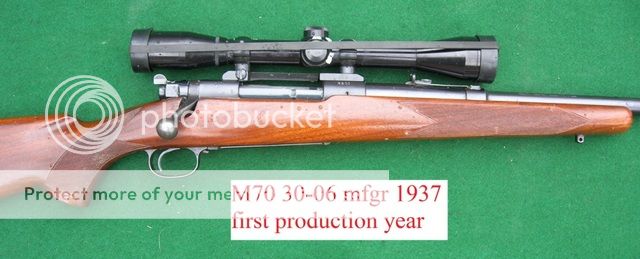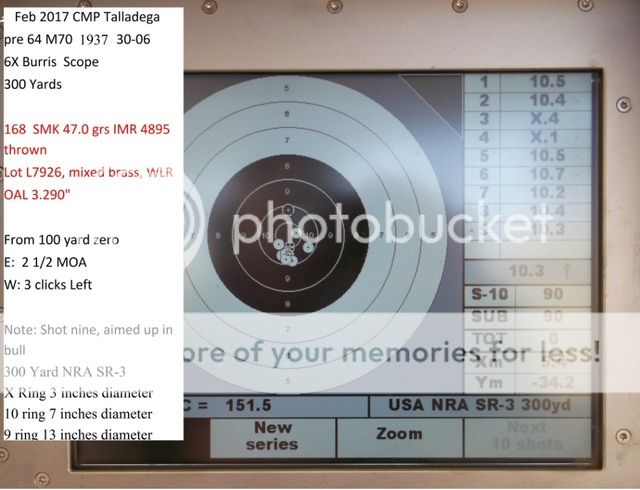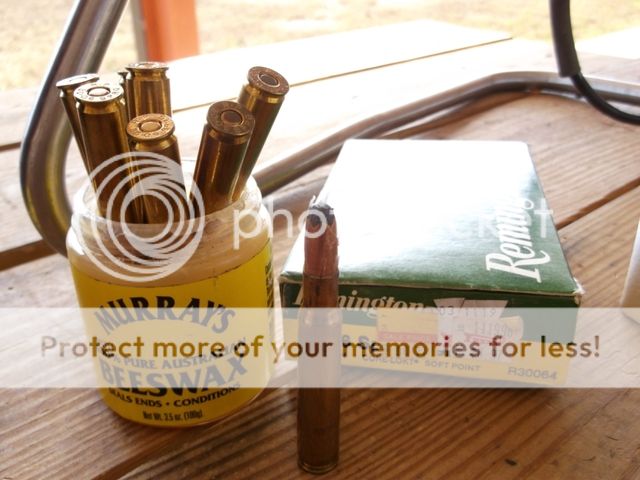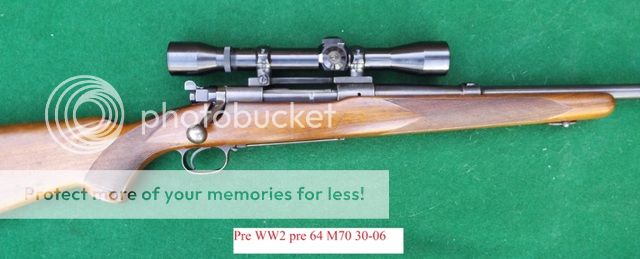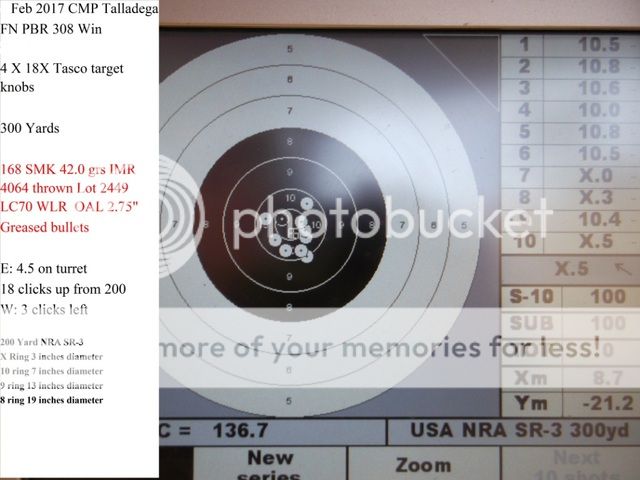These targets are what the Army posted in Army publications for the ammunition selected for the National Matches. I believe, but I don't know, but it would have been consistent with Army velocity data, that the barrels used on the 7.62 were 22" inches long and the 30-06 were 24" inches long. This is objective test evidence not something based on personnel recollections.
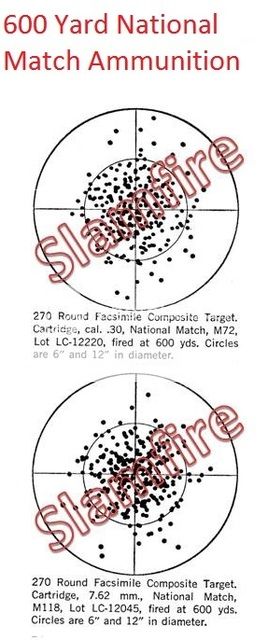
I watermarked this as the last time I posted National Match Composite targets, someone got into my account and deleted them. And then, a good while later, an active poster on this site managed to post truncated versions. Can't prove a thing, of course, but hopefully these watermarked versions will make things more difficult for whomever.
If I covered up the cartridge captions, would anyone be able to pick out the 7.62 target from the 30-06 target based on group size? I cannot say based on these targets that there is a huge accuracy difference between the 308 Win and 30-06. There are some confounding variables. The first is the bullet. The 174 FMJBT is inferior to the match bullets of today. I have a bunch, I will bust rocks with them, I use them to establish a rough zero before I shoot the better, more expensive bullets. I will shoot them standing in NRA competition, I can't hold that tight standing anyway. I will shoot them out to 300 yards, or 600 yards (CMP Talladega) for fun. I won't use them in competition where I know the SMK's will shoot inside of them. So, maybe with a different bullet, the 7.62 would show a marked superiority. Also, the 30-06 ammunition was intended to be fired in Garands.

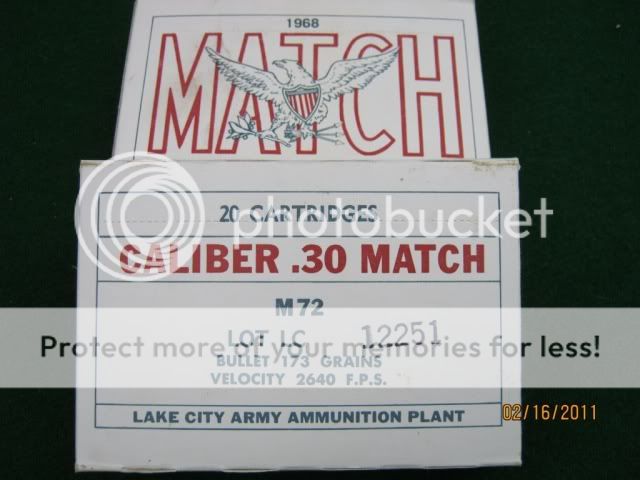
I believe, but I don't know, but it would have been consistent with Army velocity data, that the barrels used for the 7.62 were 22" inches long and for the 30-06, 24" inches long. For these Army targets, each of the cartridges was loaded with IMR 4895. The 7.62 was developed with IMR 4895 and most of the 7.62 match ammunition was loaded with IMR 4895 and most full powder IMR 4895 loads are compressed in the 7.62 case. However, the 30-06 has an air space with IMR 4895. If the 30-06 was loaded with 55.0 grains IMR 4350 and a 174, that air space would negligible . While that load is an excellent and reliable load, under all temperature conditions, it is too slow burning for a Garand. Eliminating the air space might have tightened the group at 600 yards. In the 30-06, I have chronographed 168's with 47.0 grains IMR 4895 and 55.0 grains IMR 4350, there is not a lick of difference velocity wise, but for some reason the IMR 4350 kicks more. I much preferred using IMR 4895 in my rapid fire loads.
Code:
M98 Mauser Match, 26" 1-10 Wilson Barrel
175 Sierra Match 47.0 grs AA2495 wtd CCI 34 R-P Cases OAL 3.30"
5-May-00 T = 82 ° F
Ave Vel = 2704
Std Dev = 17
ES = 44
Low = 2677
High = 2721
N = 5
175 gr Sierra 55.0grs AA4350 wtd. FED 210M W/W cases OAL 3.30"
5 Oct 2000 T=70° F
Ave Vel = 2710
Std Dev = 18
ES = 43
Low = 2679
High = 2722
N = 5
Group Size: Excellent group, rounded primers
Just become someone comes across as an authority does not mean you should not challenge them for evidence of their "fish stories". There is massive amounts of Authority based psuedo science masquerading as fact within the shooting community. This is no different from any other genre's, and it takes time for belief systems to change, for in shooting, as in Science, "Science advances one funeral at a time".
A club I shoot at was having annual "Garand Matches" at 200 yards on the 5V target. I have shot across the course on 5V but, no pictures as by the time you get off the firing line and down to the pitts, your target is pasted over. But since this was a walk up match, I was able to get pictures. These matches occurred in different years, so I am going to attribute any group or score difference to the amount of coffee I had, or how grumpy I was. I can not say based on these prone slow fire targets, with iron sights, that one cartridge is all that better out to 200 yards. I will not claim that I am any sort of accuracy standard. I recommend that all go to Regional or National Championships, inspect the targets of the real good shooters, to learn humility.
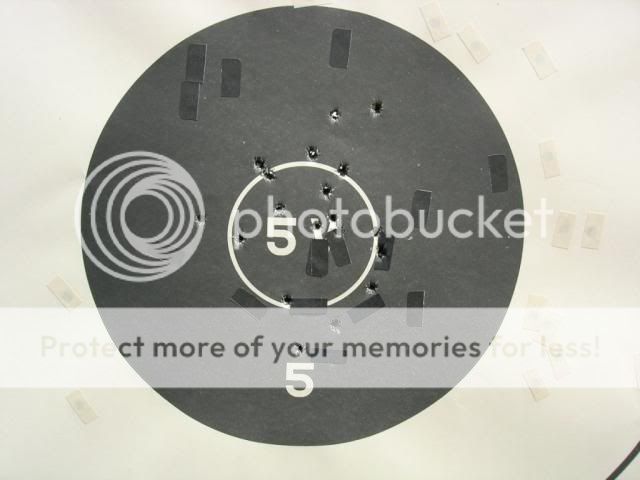
30-06 NM Garand 200 yards prone with a sling. 168 Nosler Match, 47.0 grains IMR 4895, CCI #34, lubricated LC cases.
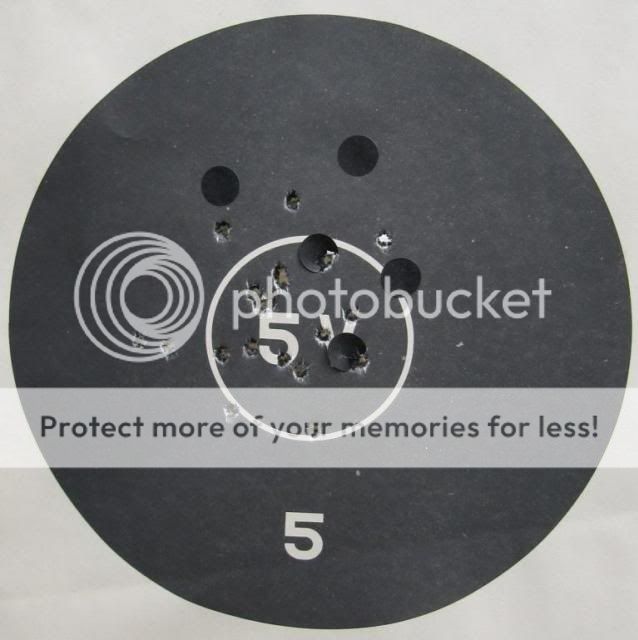
308 NM Garand, Barnett barrel, 200 yards prone with a sling, 168 Nosler Match, 41. IMR 4895 CCI #34, lubricated LC cases
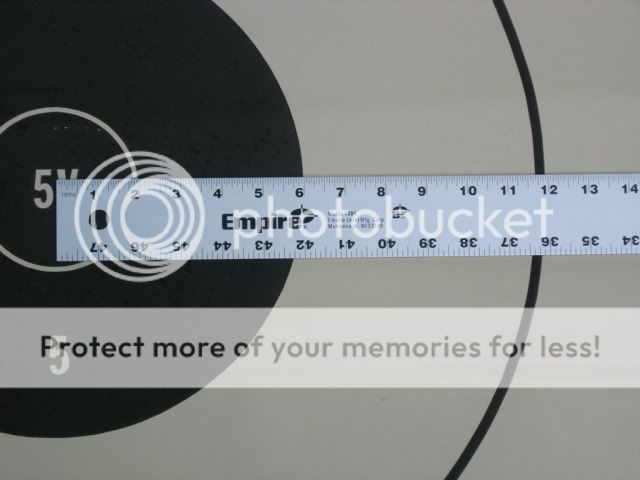
Dimensions of 200/300 yard 5V target
I did shoot a good 100 yard 20 shot group with my 30-06 in 100 yard reduced Highpower competition. I might drag out the thunderstick and see if my groups will tighten up after eight years of shooting Smallbore Prone. Sling shooters and F Class shooters benefit from shooting Smallbore Prone. I asked the high Expert at the Western Wildcat why he was shooting Smallbore Prone, and he said "my X count goes up in Palma". Sounds good to me.

I think any of these cartridges will shoot fantastically well as hunting cartridges. Any claims that one is better than the other as a hunting cartridge should not be made based on target shooting standards. Which basically, only the 308 Win is hanging on in matches where that cartridge is mandated. One rule change, to 6.5 mm, and it will be gone. In the unlimited classes, no one is shooting 30 caliber anything.
A lot of excellent cartridges would not be used in hunting, or in war, if the only evaluation standard was group size. That would also eliminate many rifle actions. I found this comment on the accuracy of military rifle, by Hummer70, to be interesting:
http://thefiringline.com/forums/showthread.php?p=5424409
If a factory new Garand shot within 5 MOA it was acceptable as a service rifle. Gee, makes you wonder why did not lose WW2 or Korea with such an inaccurate weapon and cartridge. While the military M14 was less accurate, I personally like my Match M1a, as I earned my Distinguished and a Regional Gold with the thing. One bud of mine used the M14E2 in Vietnam. He verified his zero at 50 yards between missions. His accuracy standard for his weapon's zero was
minute of 55 gallon drum
For hunting, just how accurate of a rifle and cartridge do you need? And, just how good of a shot do you need to be.? If the shooter can't hit an eight foot by eight foot target at 200 yards, does it matter if the cartridge is 1 MOA or 1 1/4 MOA? If the rifle is not zeroed at range, does it really matter how good of a shooter and how accurate the cartridge? Living near CMP Talladega is a wonderful thing. I have been dragging out my hunting rifles and checking the zero's out to 300 yards. This would be a good challenge for all internet sniper dudes, go out to this range, and on the first shot, hit the X ring at 600 yards, cold bore. Make a large bet with someone that you can do this, first time, every time, so the pain of hubris will be remembered. I have been zeroing my hunting rifles at 300 yards, and even though the sights are adjusted based on my best estimates of 100 yard, or 200 yard zeros, I have found to my dismay that none of them are centered around the X ring at 300 yards. I have to tweak the sights. If your actual group is offset 18 inches from your point of aim at 300 yards, does it really matter if the cartridge you are using is 25% more accurate than any other cartridge?
In terms of how accurate do you need the rifle to be, that should be based on an analysis of the vitals of the animal you are trying to kill. Most deer sized animals, the lethal heart/lung area is about the size of a paper plate. In my opinion, the combination of accuracy and distance is based on the shooter being able to hit a paper plate first time, every time, first shot. If you can't hit the paper plate beyond 50 yards, don't shoot past 50 yards.
I am going to say that if you really want to compare or determine accuracy, you have to get the round count up. Currently the
"Gold Standard" for Gunwriters is three shot groups. Three shot groups don't really tell you anything. At the end of a day long midrange match, the match winner is determined by 60 shots on target. For Smallbore Prone, 160 rounds. I recently shot at a Regional where last year's National Champion only dropped a point in 320 shots after a two day match. I dropped 17 points which got me nothing other than the pleasure of having been there. There are four day Smallbore Prone matches, where the winner is determined based on 640 shots. The winners are very consistent shooters. Accuracy requires consistency, three shot groups don't show it. The primary reason Gunwriters are shooting three shot groups is because they can get away with it. Less and less shooters are shooting the accuracy sports but any competition shooter knows that three shot groups are nonsense and would call it so. Gunwriters are given a flat fee for their article, around $400.00. It just makes economic sense for them to reduce the amount of time and materials as much as possible to maximize whatever pittance is left. Since what they write are infomercials, the Advertiser does not want definitive proof in print that their firearm is a rifled blunderbuss. In time I predict, one shot groups to be followed by virtual groups. The Gunwriter will sit in front of his screen, yell bang!, and imagine where the bullet will fall. The public will eat it up.















